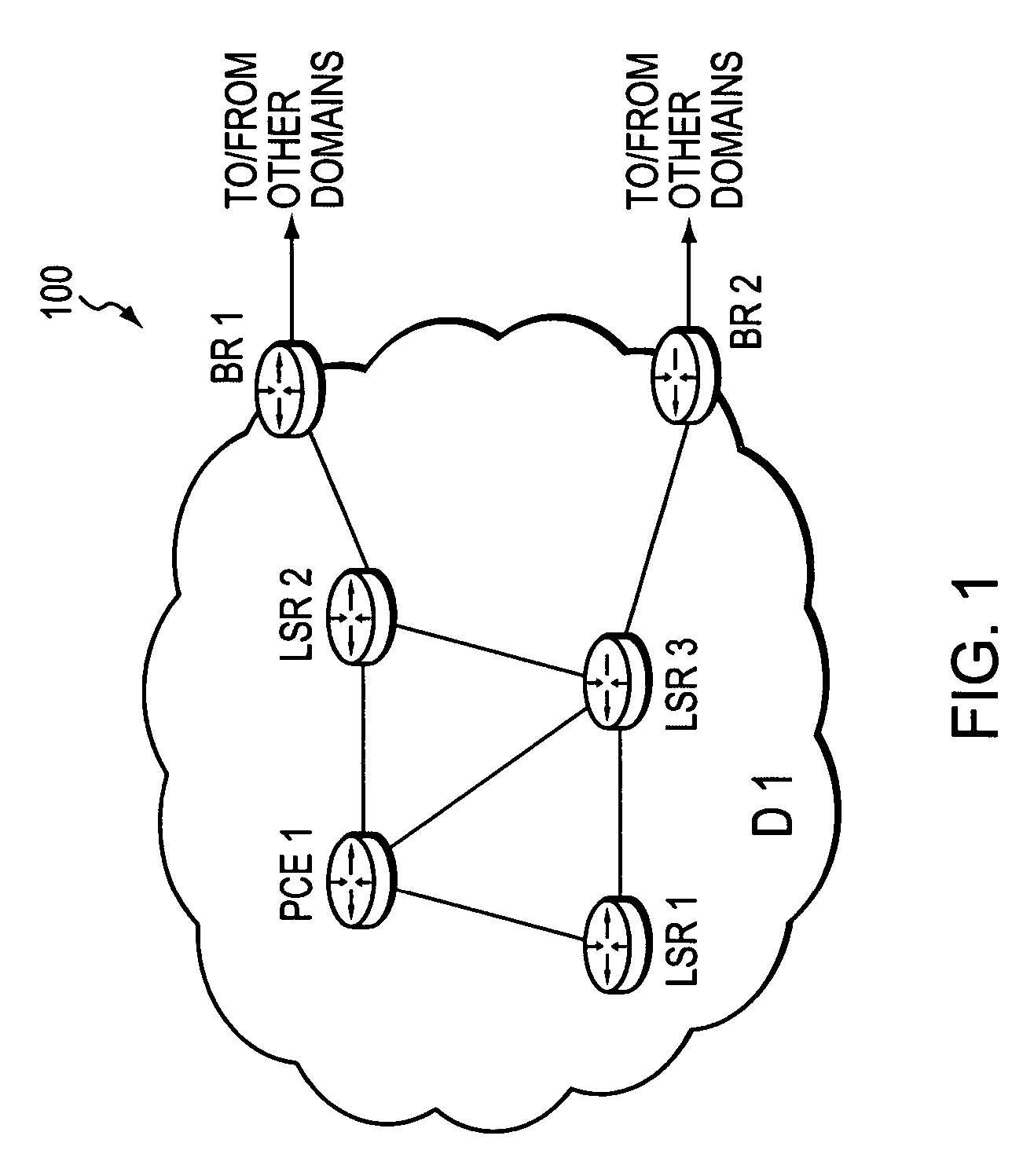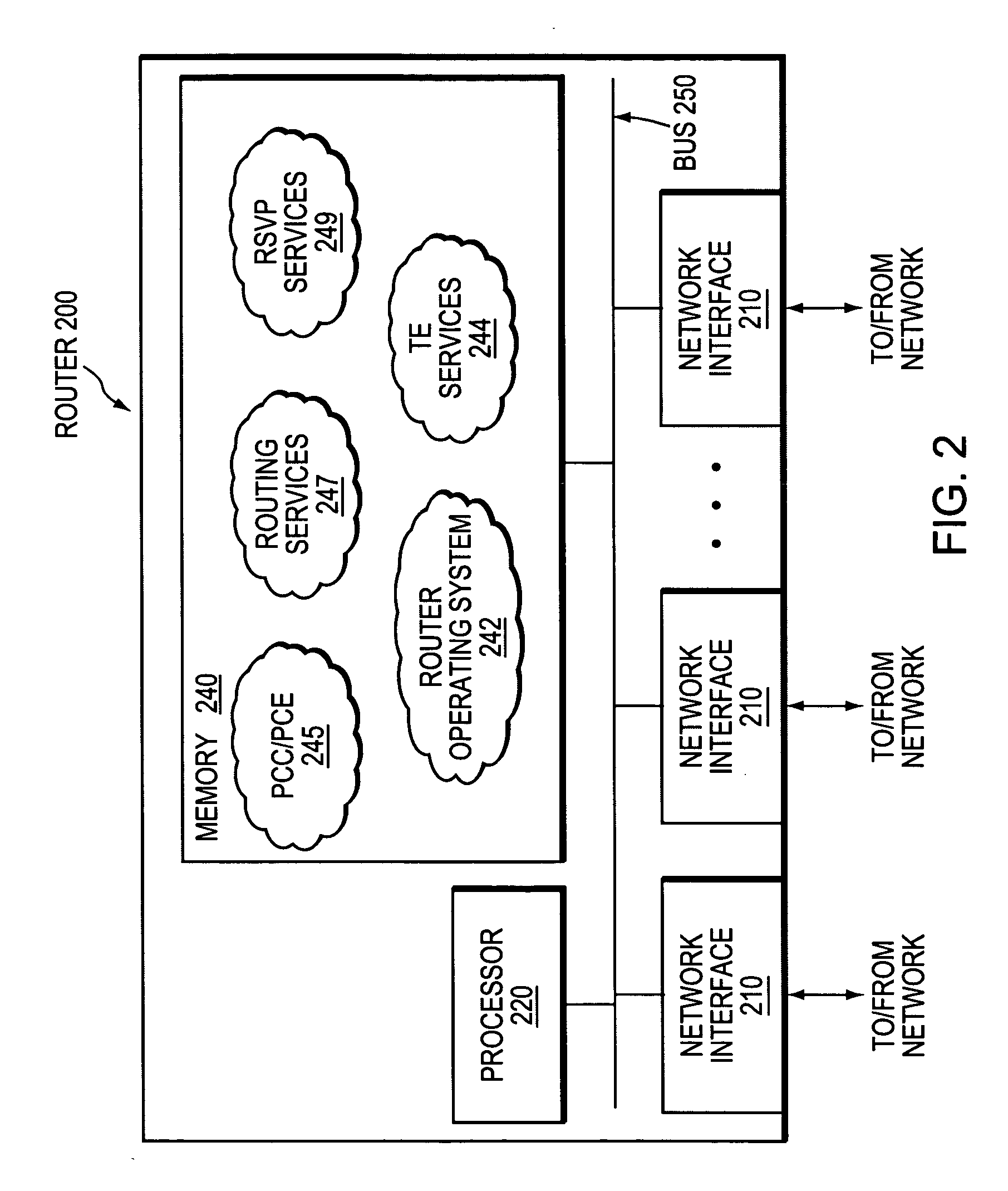Trigger for packing path computation requests
a path computation and request technology, applied in the field of computer networks, can solve the problems of path computation at the head-end lsr, lsrs sending the pcrs, and lsrs being forced to perform path computation, so as to reduce the race conditions, signal overhead, and the effect of efficient reduction
- Summary
- Abstract
- Description
- Claims
- Application Information
AI Technical Summary
Benefits of technology
Problems solved by technology
Method used
Image
Examples
Embodiment Construction
[0034]FIG. 1 is a schematic block diagram of an exemplary computer network 100 comprising domain D1. Domain D1 has exemplary border routers BR1 and BR2 connected to other domains (not shown), and also has exemplary intradomain routers LSR1, LSR2, LSR3, and PCE1, the latter of which is configured to operate as a PCE for the domain in accordance with the present invention described herein. As used herein, a domain may be configured as an area or an autonomous system (AS). An area is a collection of routers that share full network topology information with each other but not necessarily with routers outside the area. The border routers BR1-2 in an area are embodied as area border routers (ABRs), which are shared with adjacent areas (not shown). The term area as used herein also encompasses the term “level” which has a similar meaning for networks that employ IS-IS as their interior gateway protocol (IGP), in which case the border routers BR1-2 are embodied as level 1 / level 2 (L1L2) rou...
PUM
 Login to View More
Login to View More Abstract
Description
Claims
Application Information
 Login to View More
Login to View More - R&D
- Intellectual Property
- Life Sciences
- Materials
- Tech Scout
- Unparalleled Data Quality
- Higher Quality Content
- 60% Fewer Hallucinations
Browse by: Latest US Patents, China's latest patents, Technical Efficacy Thesaurus, Application Domain, Technology Topic, Popular Technical Reports.
© 2025 PatSnap. All rights reserved.Legal|Privacy policy|Modern Slavery Act Transparency Statement|Sitemap|About US| Contact US: help@patsnap.com



